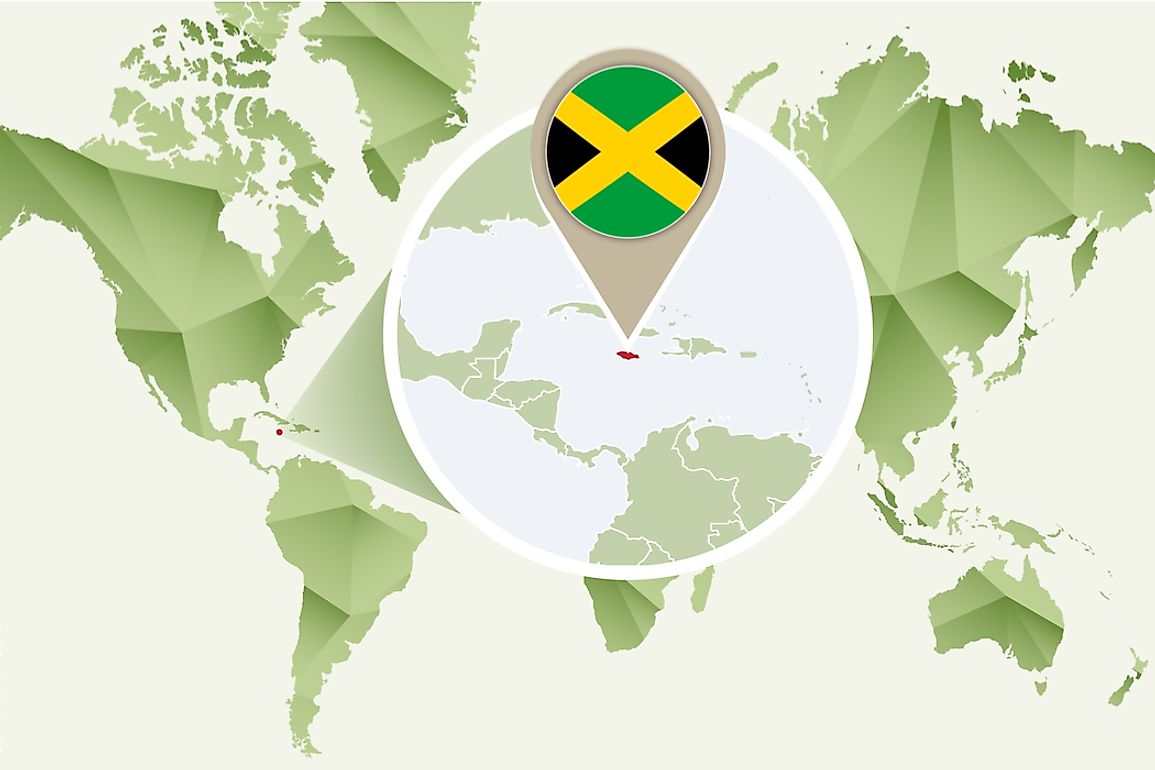What Continent Is Jamaica In? Discovering Jamaica's Geographic Location

Jamaica, a vibrant island nation in the Caribbean, is often admired for its stunning beaches, rich culture, and reggae music. But if you're wondering, "what continent is Jamaica in?", you're not alone! This question is common among travelers and geography enthusiasts alike. Jamaica is located in the Caribbean Sea, which makes it part of the North American continent, although it is commonly associated with the Caribbean region.
In this article, we will delve deep into Jamaica's geographical location, its relationship with the surrounding regions, and the unique characteristics that define this beautiful island. We'll explore important aspects like its history, culture, and tourism, helping you gain a comprehensive understanding of this Caribbean gem.
By the end of this article, you'll not only know what continent Jamaica is in, but also appreciate the factors that contribute to its distinctive identity. So, let’s embark on this enlightening journey!
Table of Contents
Geographical Location of Jamaica
Jamaica is situated in the Caribbean Sea, to the south of Cuba and west of Hispaniola (the island containing Haiti and the Dominican Republic). It is positioned at coordinates 18.1096° N latitude and 77.2975° W longitude. This location places Jamaica firmly within the Caribbean region, which is part of the North American continent.
To understand Jamaica's geographical context better, here are some key points:
- **Surrounding Bodies of Water:** Jamaica is surrounded by the Caribbean Sea to the south, the Gulf of Mexico to the northwest, and the Atlantic Ocean to the northeast.
- **Proximity to Other Islands:** The island is located approximately 90 miles south of Florida, USA, and 150 miles west of Puerto Rico.
- **Area and Size:** Jamaica is the third-largest island in the Caribbean, covering an area of about 4,240 square miles.
A Brief History of Jamaica
Jamaica's history is rich and complex, shaped by various cultures and influences over the centuries. Initially inhabited by the Arawak and Taino peoples, the island was discovered by Christopher Columbus in 1494 and later colonized by the Spanish. In 1655, the British captured Jamaica, leading to a long period of British rule.
Key historical events include:
- **The Slave Trade:** The British established sugar plantations, which relied heavily on enslaved Africans, leading to a significant demographic shift.
- **Abolition of Slavery:** Jamaica officially abolished slavery in 1834, which marked a turning point in its history.
- **Independence:** Jamaica gained independence from Britain on August 6, 1962, and became a member of the Commonwealth.
Culture and People of Jamaica
Jamaica's culture is a rich tapestry woven from its history, diverse population, and vibrant traditions. The island is known for its music, art, and cuisine, reflecting the influences of African, European, and Indigenous cultures.
Music and Dance
Jamaica is the birthplace of reggae music, popularized by legendary artists such as Bob Marley. Other musical genres originating from Jamaica include ska, rocksteady, and dancehall, making the island a musical powerhouse in the Caribbean.
Cuisine
Jamaican cuisine is famous for its bold flavors and spices. Some popular dishes include:
- **Jerk Chicken:** A spicy grilled chicken marinated in a blend of herbs and spices.
- **Ackee and Saltfish:** The national dish, consisting of ackee fruit and salted codfish.
- **Rice and Peas:** A staple side dish made with rice and kidney beans, flavored with coconut milk.
Tourism in Jamaica
Tourism is a significant part of Jamaica's economy, attracting millions of visitors each year. The island is renowned for its stunning beaches, lush mountains, and vibrant culture.
Some of the top tourist attractions in Jamaica include:
- **Negril Beach:** Famous for its stunning sunsets and pristine waters.
- **Dunn's River Falls:** A beautiful waterfall that attracts adventure seekers and nature lovers.
- **Bob Marley Museum:** Celebrating the life and legacy of reggae legend Bob Marley.
Economy of Jamaica
Jamaica's economy is diverse, with key sectors including tourism, agriculture, mining, and remittances from Jamaicans living abroad. The island produces several agricultural exports, including sugar, bananas, and coffee.
Key economic points include:
- **Tourism Contribution:** Tourism accounts for a significant percentage of the country's GDP.
- **Bauxite Mining:** Jamaica is one of the world's largest producers of bauxite, the primary ore for aluminum production.
- **Challenges:** Jamaica faces economic challenges, including high debt levels and unemployment rates.
Natural Beauty of Jamaica
Jamaica is blessed with natural beauty, from its stunning beaches to lush mountains and tropical rainforests. The island is home to numerous national parks and protected areas, providing opportunities for outdoor activities and wildlife observation.
Some of the natural attractions include:
- **Blue Mountains:** Known for its coffee plantations and hiking trails.
- **Seven Mile Beach:** A beautiful stretch of white sand beach in Negril.
- **John Crow Mountains:** A UNESCO World Heritage Site, rich in biodiversity.
Conclusion
In summary, Jamaica is located in the Caribbean Sea and is part of the North American continent. Its rich history, vibrant culture, and stunning natural beauty make it a unique destination worth exploring. Whether you're interested in music, cuisine, or outdoor adventures, Jamaica has something to offer everyone.
We invite you to share your thoughts in the comments section below, and don't forget to explore other articles on our site to learn more about the fascinating world around us!
References
1. Jamaica National Statistics Office. (2023). Economic Overview.
2. Caribbean Tourism Organization. (2023). Jamaica Tourism Statistics.
3. UNESCO World Heritage Centre. (2023). John Crow Mountains.
ncG1vNJzZmivmaC2b7XSrJirrZKWe6S7zGisqZyRqbKvsdasaG5np52utXnCqKWtoZ6au7V5yKxko5mdlrakrYyipWegpKK5